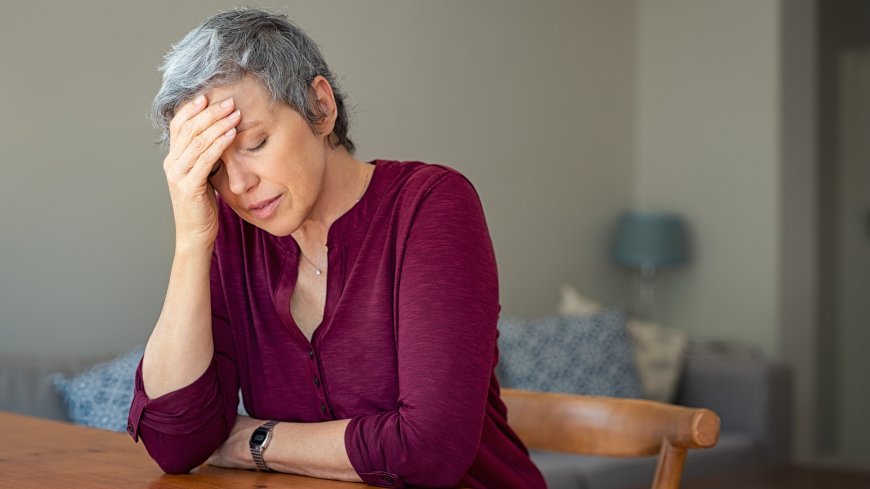Reduce Stress & Anxiety with These Yoga Techniques
Discover how yoga helps reduce stress and anxiety by promoting relaxation, mindfulness, and better sleep. Try these simple yoga techniques for a calmer mind.

Stress and anxiety have become common issues in today's fast-paced world. Many people seek natural and effective ways to manage these conditions, and yoga has proven to be a powerful solution. With its combination of physical postures, breathing techniques, and mindfulness, yoga helps reduce stress and anxiety while promoting overall well-being. This article explores the significance of yoga in stress relief and provides practical steps to incorporate it into daily life.
Significance of Yoga in Reducing Stress and Anxiety
1. Promotes Relaxation and Reduces Cortisol Levels
One of the primary benefits of yoga is its ability to promote relaxation. Through deep breathing exercises and mindful movement, yoga activates the parasympathetic nervous system, which counteracts the body's stress response. Studies show that regular yoga practice can lower cortisol levels, the primary stress hormone, helping individuals feel more calm and balanced.
2. Enhances Mindfulness and Emotional Regulation
Yoga encourages mindfulness, which is the practice of staying present and aware of the moment. This awareness helps individuals recognize stress triggers and manage their emotional responses effectively. By practicing mindfulness through yoga, people develop better emotional regulation, reducing the likelihood of feeling overwhelmed by stress and anxiety.
3. Improves Sleep Quality
Stress and anxiety often lead to sleep disturbances. Yoga, particularly styles such as Hatha and Restorative Yoga, promotes better sleep by calming the mind and relaxing the body. Practices such as Yoga Nidra, a guided meditation technique, help individuals achieve deep relaxation, leading to improved sleep patterns.
4. Boosts Mood and Mental Clarity
Engaging in regular yoga practice stimulates the production of endorphins, the body's natural mood boosters. Additionally, yoga helps reduce symptoms of anxiety and depression by increasing the levels of gamma-aminobutyric acid (GABA), a neurotransmitter that promotes relaxation. This results in enhanced mental clarity and a more positive outlook on life.
5. Encourages a Healthy Lifestyle
Yoga is not just a physical practice but a holistic approach to well-being. It encourages healthier lifestyle choices, such as mindful eating, proper hydration, and self-care practices. By incorporating yoga into daily life, individuals are more likely to adopt habits that contribute to long-term stress reduction and overall mental wellness.
Practical Steps to Incorporate Yoga into Daily Life
1. Start with Simple Breathing Exercises
Breathing techniques, or pranayama, are an essential part of yoga and can be practiced anywhere. Simple exercises such as deep belly breathing, alternate nostril breathing (Nadi Shodhana), and the 4-7-8 breathing technique help calm the nervous system and reduce anxiety.
2. Practice Yoga Poses for Stress Relief
Certain yoga poses are particularly effective in relieving stress and anxiety. Some beneficial poses include:
-
Child’s Pose (Balasana) – Promotes relaxation and releases tension in the back and shoulders.
-
Cat-Cow Pose (Marjaryasana-Bitilasana) – Enhances spinal flexibility and reduces stress.
-
Downward-Facing Dog (Adho Mukha Svanasana) – Improves circulation and relieves tension.
-
Legs-Up-The-Wall Pose (Viparita Karani) – Encourages relaxation and soothes the nervous system.
-
Corpse Pose (Savasana) – Helps the body fully relax and integrates the benefits of yoga practice.
3. Incorporate Mindfulness and Meditation
Meditation is a core component of yoga and plays a vital role in stress management. Even a few minutes of daily meditation can make a significant difference. Beginners can start with guided meditations, focusing on their breath or using a mantra to stay present.
4. Set a Consistent Routine
To maximize the benefits of yoga, consistency is key. Practicing yoga for just 15-30 minutes a day can significantly reduce stress and anxiety levels. Setting a regular schedule, such as morning or evening practice, helps establish a sustainable routine.
5. Join a Yoga Class or Use Online Resources
For those new to yoga, joining a class or following online tutorials can provide guidance and motivation. Many yoga instructors offer specialized sessions focusing on stress relief, making it easier to find practices suited to individual needs.
Conclusion
Yoga is a powerful tool for reducing stress and anxiety, offering both physical and mental benefits. By incorporating simple yoga practices into daily life, individuals can achieve greater relaxation, improved mood, and enhanced overall well-being. Start your yoga journey today by trying a few poses, practicing mindfulness, or joining a class. Leave a comment below sharing your experience with yoga or explore our related blogs for more wellness tips!
What's Your Reaction?
 Like
0
Like
0
 Dislike
0
Dislike
0
 Love
0
Love
0
 Funny
0
Funny
0
 Angry
0
Angry
0
 Sad
0
Sad
0
 Wow
0
Wow
0























